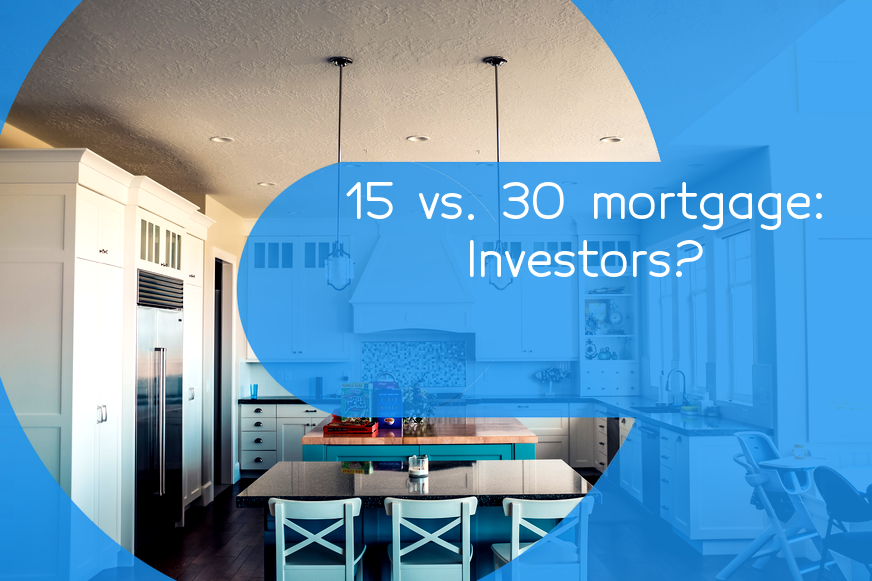A 15-year mortgage typically has a higher monthly payment than a 30-year mortgage, but it has a lower interest rate and a quicker payback period. The shorter term means you'll own the property free and clear much sooner than with a 30-year mortgage. If you plan on holding the property for a long time, then this may not matter to you. However, if you plan on selling the property in the near future, then a 15-year mortgage might be the better option. The shorter term also means you'll build up equity in the property at a faster rate, which could be beneficial if you plan on using that equity to finance other investments.
A 30-year mortgage, on the other hand, has a lower monthly payment and a longer payback period. This lower payment can be appealing to investors who need that extra cash flow to put towards other investments or expenses. However, the longer payback period means you'll be paying more in interest over the life of the loan. This could potentially eat into your profits over time, especially if interest rates rise in the future.
Ultimately, whether a 15-year or 30-year mortgage is better for investors depends on their individual investment goals, financial situation, and risk tolerance. Both options have their advantages and disadvantages, and investors need to evaluate their specific circumstances to determine which option is right for them.
Real estate financing: key definitions
Real estate financing refers to the process of obtaining funds to acquire or invest in real estate through a variety of means. Some of the key definitions related to real estate financing include:
- 1Mortgage: A mortgage is a loan provided by a financial institution or lender that is secured by the property being purchased or refinanced. The borrower repays the loan with interest over a specified period of time.
- 2Equity: Equity refers to the difference between the value of a property and the amount of any outstanding mortgage or other encumbrances. It represents the owner's interest in the property.
- 3Loan-to-value (LTV) ratio: This is the ratio of the amount of the loan to the appraised value of the property. For example, if a borrower obtains a $200,000 mortgage on a property valued at $250,000, the LTV ratio would be 80%.
- 4Down payment: The down payment is the amount of money the borrower pays upfront when purchasing a property. This amount is generally a percentage of the purchase price, and the larger the down payment, the lower the LTV ratio.
- 5Amortization: This refers to the process of repaying a loan with regular payments over a specific period of time. Each payment is made up of both principal and interest, with the proportion of each determined by the loan's amortization schedule.
- 6Interest rate: The interest rate is the cost of borrowing money from a lender. It is typically expressed as an annual percentage of the loan amount, and can be fixed or variable depending on the terms of the loan.
The key advantages of a 15-year mortgage
- 1Lower Interest Rate: Typically, the interest rate on a 15-year mortgage is lower than that of a 30-year mortgage. This means that borrowers will pay less in interest over the life of the loan.
- 2Shorter Term: Because the term of the loan is only 15 years, borrowers can pay off the loan more quickly. This means that they will have more equity in their home sooner and can be debt-free faster.
- 3Savings on Interest: With a 15-year mortgage, borrowers can save tens of thousands of dollars in interest payments over the life of the loan compared to a 30-year mortgage.
- 4Builds Equity Faster: With a shorter loan term, borrowers are able to build equity in their home more quickly. This is because a larger portion of their monthly payment goes towards the principal balance of the loan.
- 5Increased Financial Stability: Paying off a mortgage in 15 years can provide borrowers with greater financial stability. Without a mortgage payment, they can have more disposable income for other expenses or investments.
Advantages to a 30-year mortgage
There are several advantages to choosing a 30-year mortgage:
- 1. Lower monthly payments: Because the loan is stretched out over 30 years, the monthly payments are lower than they would be for a shorter loan term.
- 2. Ability to afford a more expensive home: With lower monthly payments, you may be able to afford a more expensive home than you would with a shorter loan term.
- 3. Predictable payments: With a fixed-rate 30-year mortgage, your monthly payment will not change for the life of the loan, providing stability and predictability in your budget.
- 4. Tax benefits: Mortgage interest is tax deductible, and the longer you have a mortgage, the more interest you pay, which can provide a tax benefit.
- 5. Flexibility: While you can always pay off a 30-year mortgage more quickly if you choose, the lower monthly payments provide flexibility for unexpected expenses or financial setbacks.
So what's better - a 15-year or 30-year mortgage?
There are pros and cons to both 15 and 30-year mortgages, depending on individual financial goals and circumstances.
A 15-year mortgage typically comes with a lower interest rate, which means lower total interest paid over the life of the loan. Also, it has a shorter term, which means you'll be debt-free in half the time and save more money in the long run. However, the downside is that the monthly payments will be higher, which could be a strain on your budget.
On the other hand, a 30-year mortgage has lower monthly payments, making it more manageable for most people. However, the interest rates are higher, which means you'll pay more in interest over time. The loan term is longer, which means you'll have to pay off your debt for 15 more years compared to a 15-year mortgage.
Ultimately, the better option depends on your financial goals and circumstances. If you can afford higher monthly payments and want to save more money in the long run, a 15-year mortgage might be a better fit. But if you prefer lower monthly payments and a longer repayment period, a 30-year mortgage might be the way to go. It's important to evaluate both options carefully and weigh the pros and cons before making a decision.
Just one more thing: if you liked the article, please like us on social media and share this article with friends.



